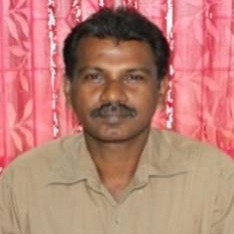
Sundareswaran P
Work place: Department of Computer Science and Engineering, Manonmaniam Sundaranar University,Tirunelveli,627012, India.
E-mail: psundareswaran@msuniv.ac.in
Website:
Research Interests: Computer systems and computational processes, Computer Architecture and Organization, Computer Networks, Data Structures and Algorithms
Biography
P. Sundareswaran is currently working as Assistant Professor in the Department of Computer Science & Engineering in Manonmaniam Sundaranar University, Tirunelveli, India. He is pursuing his Ph.D in the area of Wireless Sensor Networks. He received his M.E. degree in Computer Science and Engineering from Manonmaniam Sundaranar University Tirunelveli, India in 2004. His areas of interest in research are Computer Networks, Mobile Computing, IoT and Wireless communications
Author Articles
EGEC: An Energy Efficient Exponentially Generated Clustering Mechanism for Reactive Wireless Sensor Networks
By Sundareswaran P Rajesh R S Vardharajulu K N
DOI: https://doi.org/10.5815/ijwmt.2018.06.05, Pub. Date: 8 Nov. 2018
As most of the wireless sensor networks are unattended by humans, the energy is an important issue while deploying nodes of wireless sensor network in hazardous environments. One of the method to preserve energy consumption among sensor nodes is clustering. Using clustering, the nodes send the data to the nearest cluster head instead of far away sink. In applications using reactive wireless sensor networks, a limited number of sensor nodes are activated due to exceed in threshold values and the other nodes are under idle state. As far as the reactive wireless sensor network is concerned, the number of clusters would have been based on the number of active nodes and alive nodes. In this work, an optimum number of clusters is computed based on the ratio between active nodes and alive nodes. Extensive analysis and comparisons are made with existing protocol and found that the proposed methodology outperforms the existing protocol in terms of networks life time and throughput.
[...] Read more.Other Articles
Subscribe to receive issue release notifications and newsletters from MECS Press journals